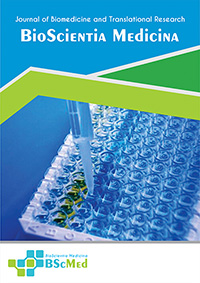Main Article Content
Abstract
Background: Acute compartment syndrome (ACS) in the pediatric hand is a formidable surgical emergency where delayed diagnosis can lead to devastating neuromuscular deficits and limb loss. The narrow therapeutic window, often termed the "golden hours," is considered critical for preventing irreversible ischemic necrosis. Presentations delayed beyond this period, especially in pre-verbal children, pose a significant clinical and ethical dilemma regarding the utility and risks of surgical intervention.
Case presentation: A 2-year-old female presented to our emergency department 24 hours after a severe crush injury to her right hand from a noodle-making machine. The hand was massively swollen, cyanotic, and insensate, with no detectable capillary refill or digital oximetry readings. A clinical diagnosis of advanced, multi-compartmental ACS was made. Emergency surgical decompression was performed via seven incisions, releasing all ten osteofascial compartments. Intraoperative assessment revealed dusky, non-contractile but bleeding muscle. Following staged debridements, the patient demonstrated remarkable recovery. At six months, she achieved full range of motion in all digits except the middle finger and demonstrated age-appropriate grip and pincer grasp, with the primary sequela being a fixed flexion contracture of the middle finger's proximal interphalangeal joint.
Conclusion: This report highlights a case of unexpected functional recovery following a significantly delayed fasciotomy. The outcome supports a nuanced approach to delayed pediatric ACS, suggesting that in select cases, aggressive surgical decompression should be considered as the potential for a positive outcome may exist. This case serves as a powerful, hypothesis-generating observation that raises critical questions about the absolute temporal limits for surgical intervention and underscores the importance of individualized surgical judgment.
Keywords
Article Details
As our aim is to disseminate original research article, hence the publishing right is a necessary one. The publishing right is needed in order to reach the agreement between the author and publisher. As the journal is fully open access, the authors will sign an exclusive license agreement.
The authors have the right to:
- Share their article in the same ways permitted to third parties under the relevant user license.
- Retain copyright, patent, trademark and other intellectual property rights including research data.
- Proper attribution and credit for the published work.
For the open access article, the publisher is granted to the following right.
- The non-exclusive right to publish the article and grant right to others.
- For the published article, the publisher applied for the Creative Commons Attribution-NonCommercial-ShareAlike 4.0 International License.





